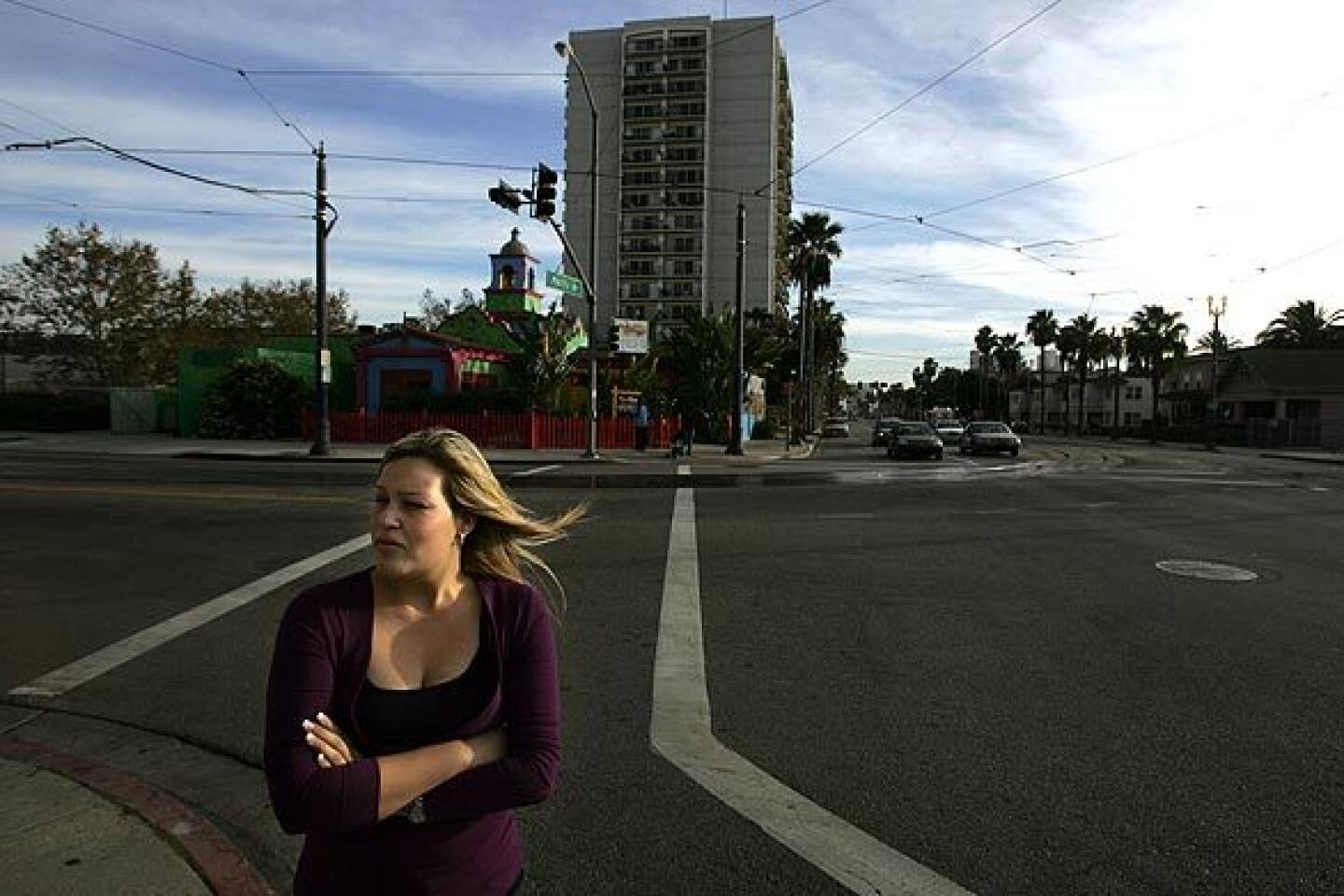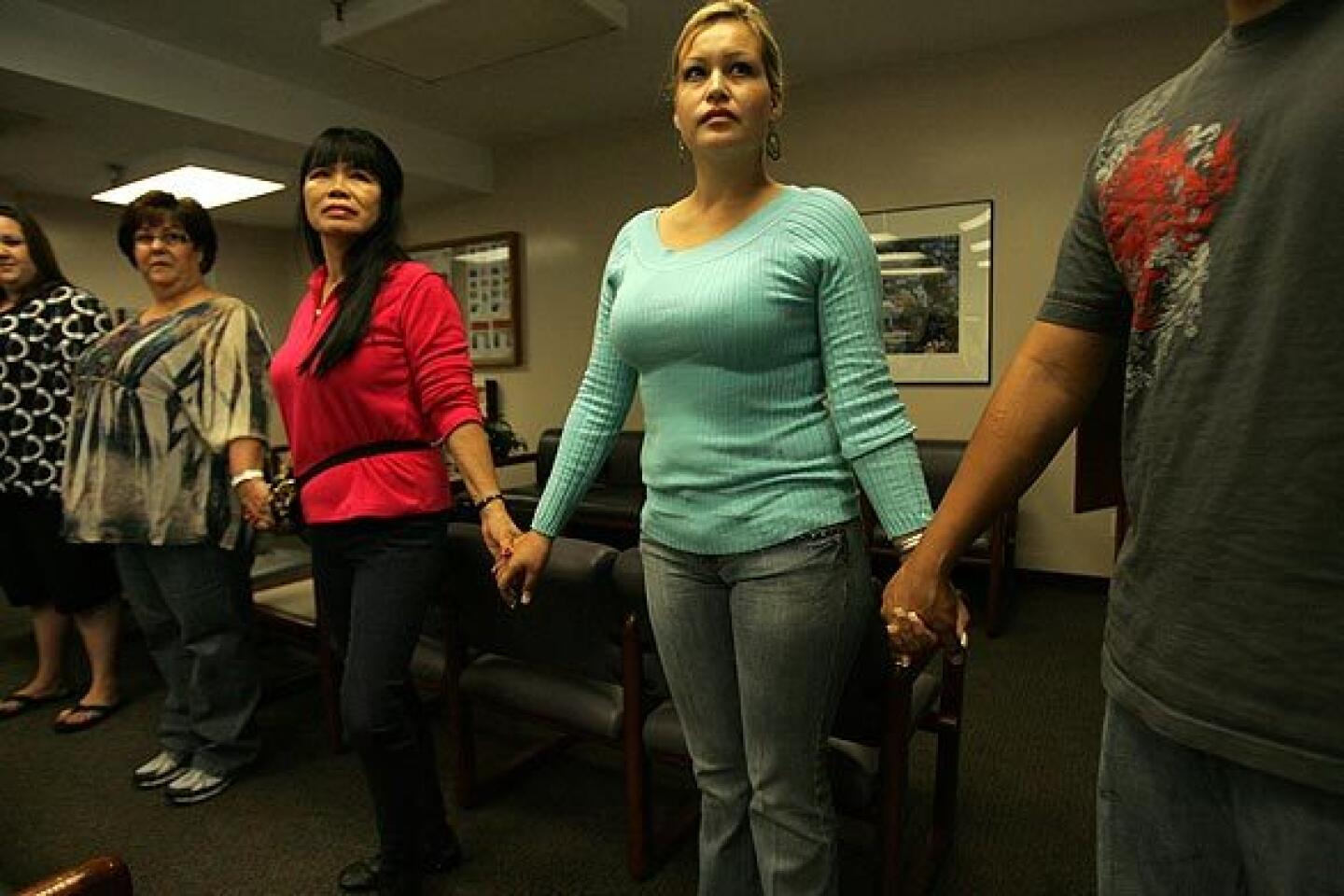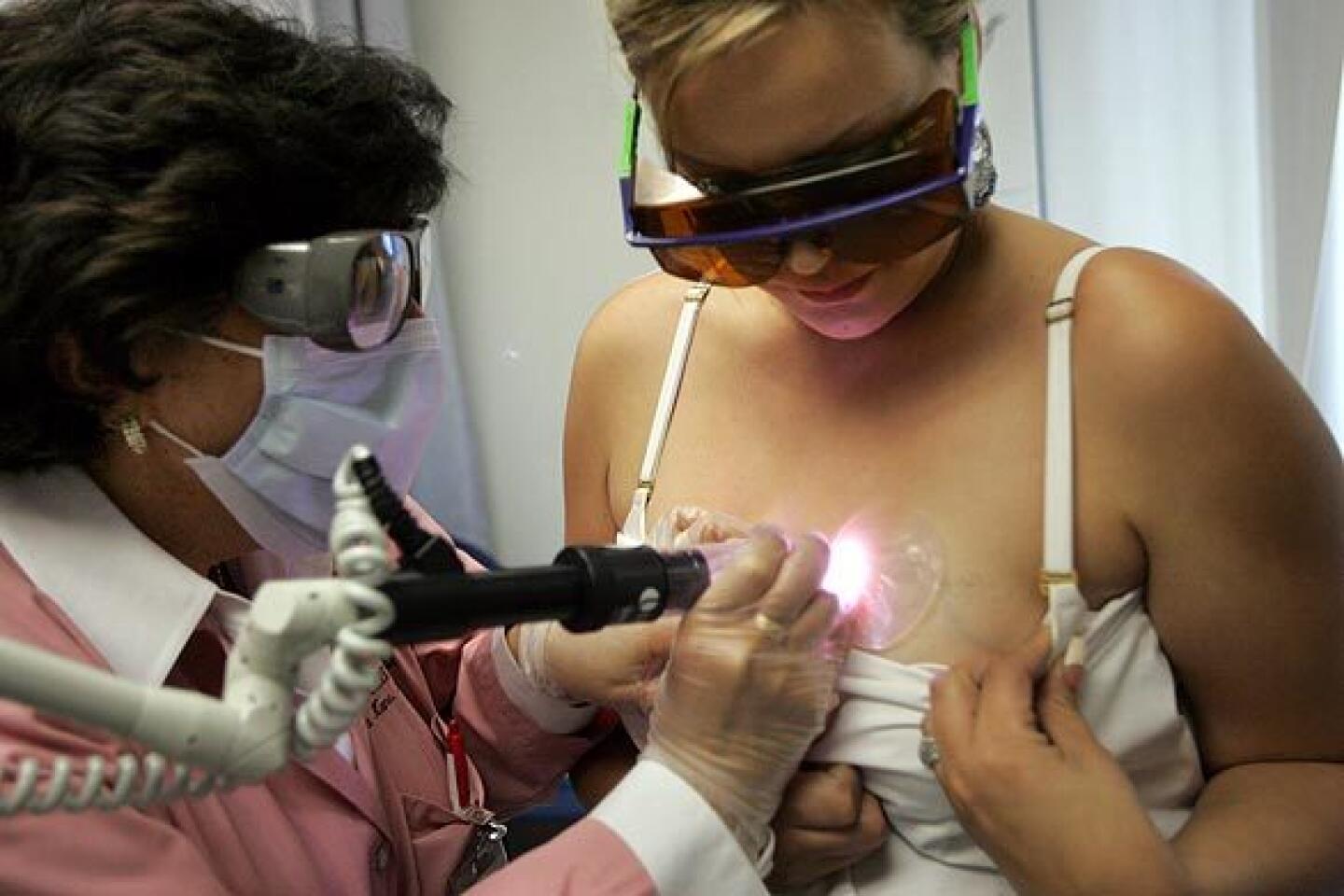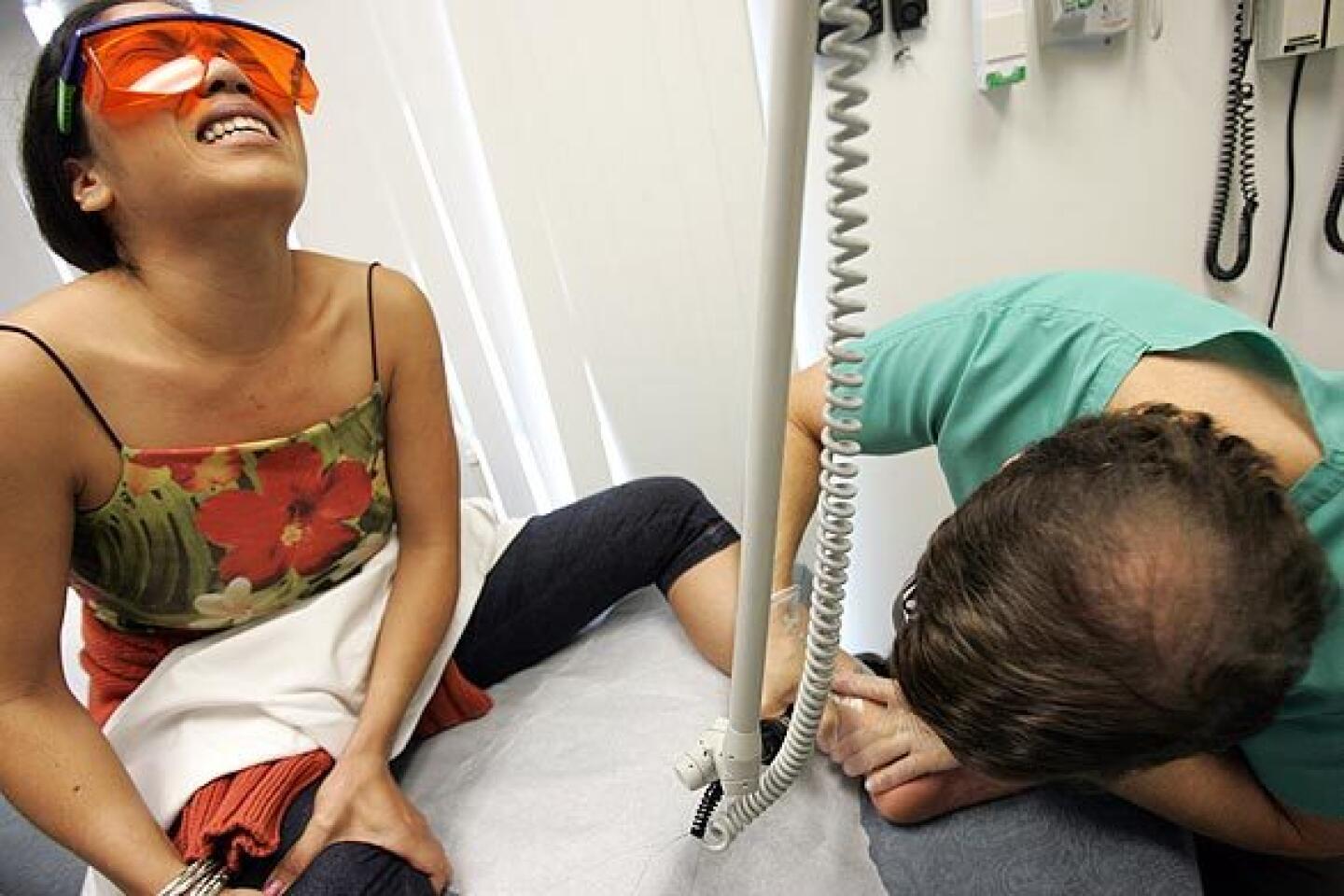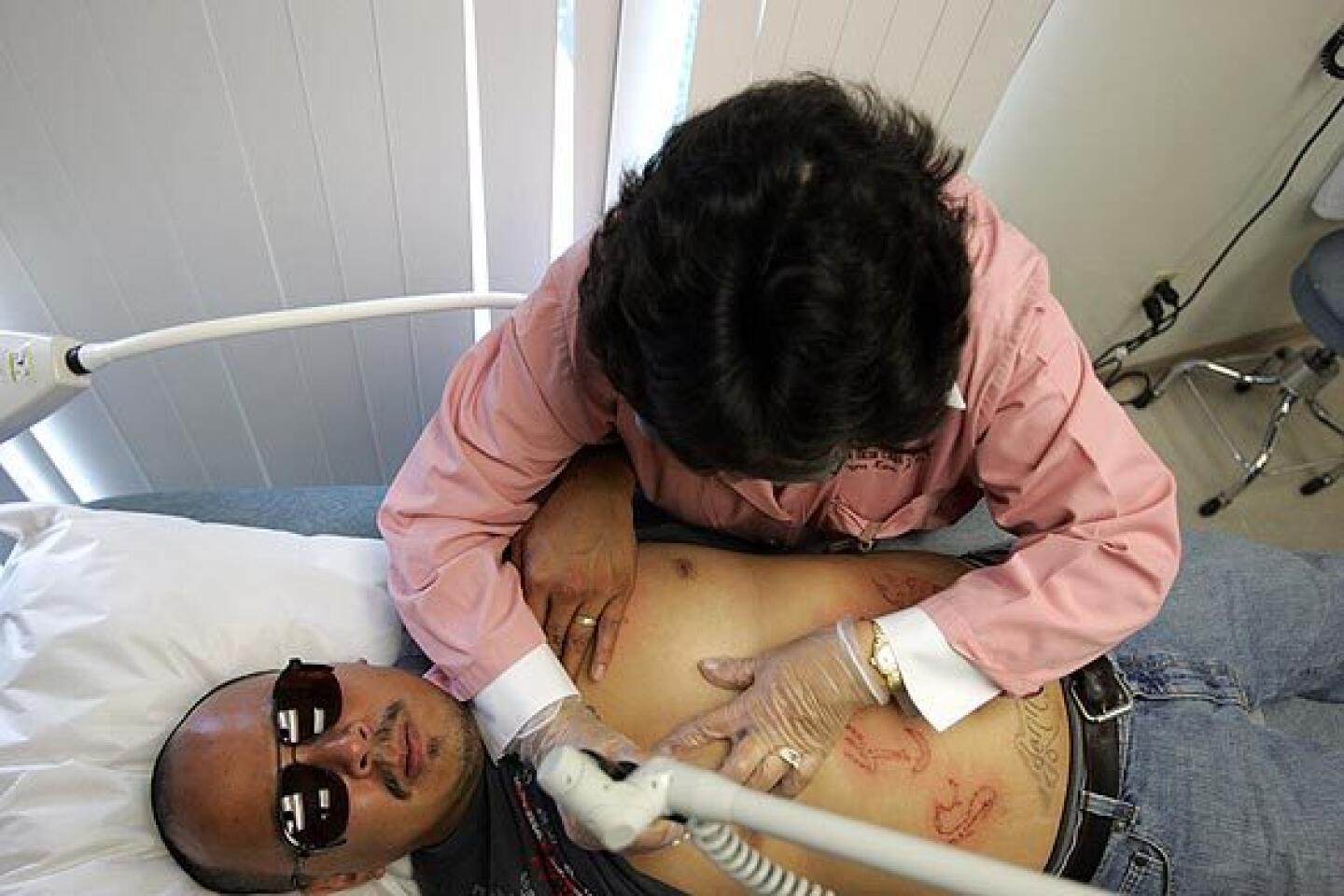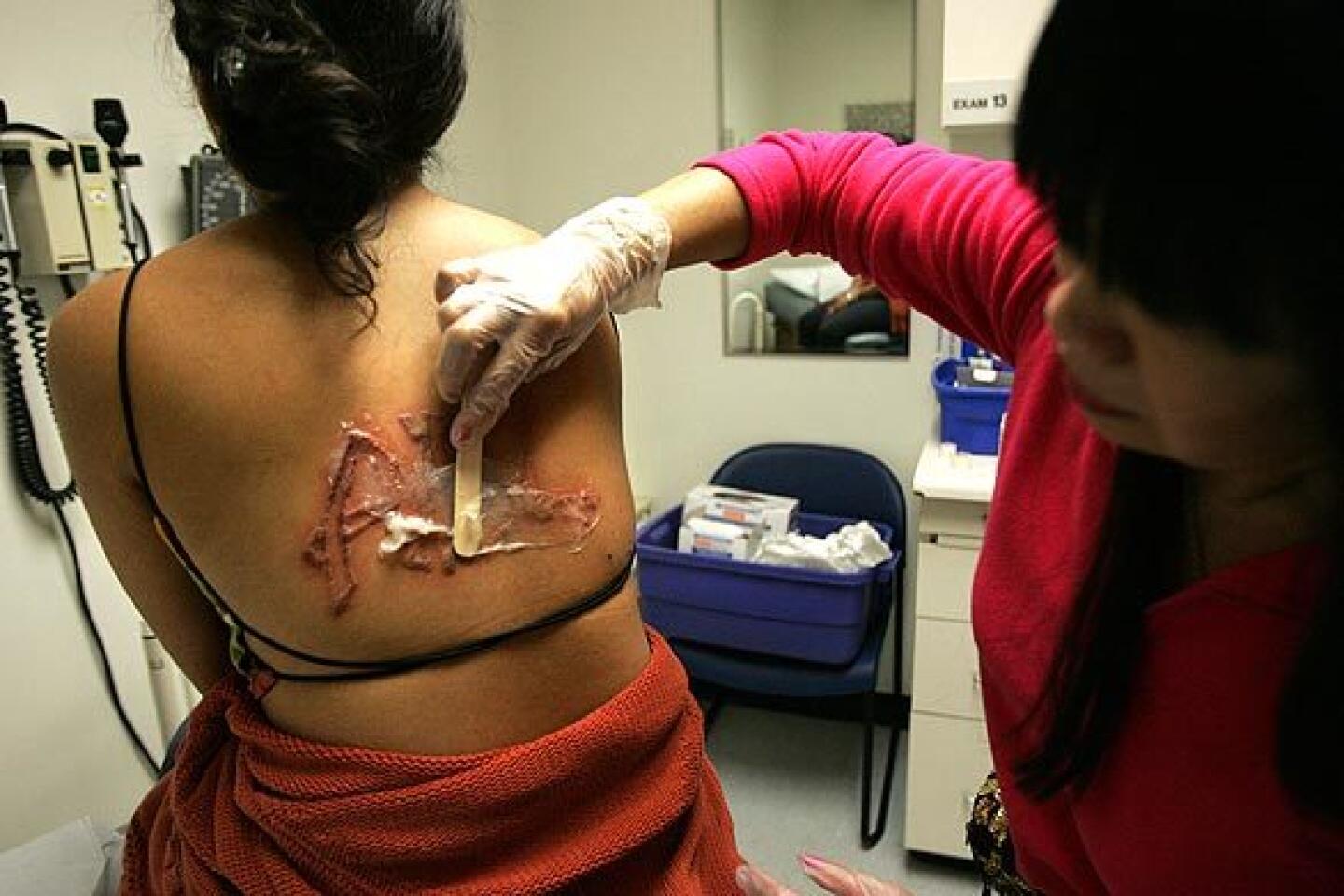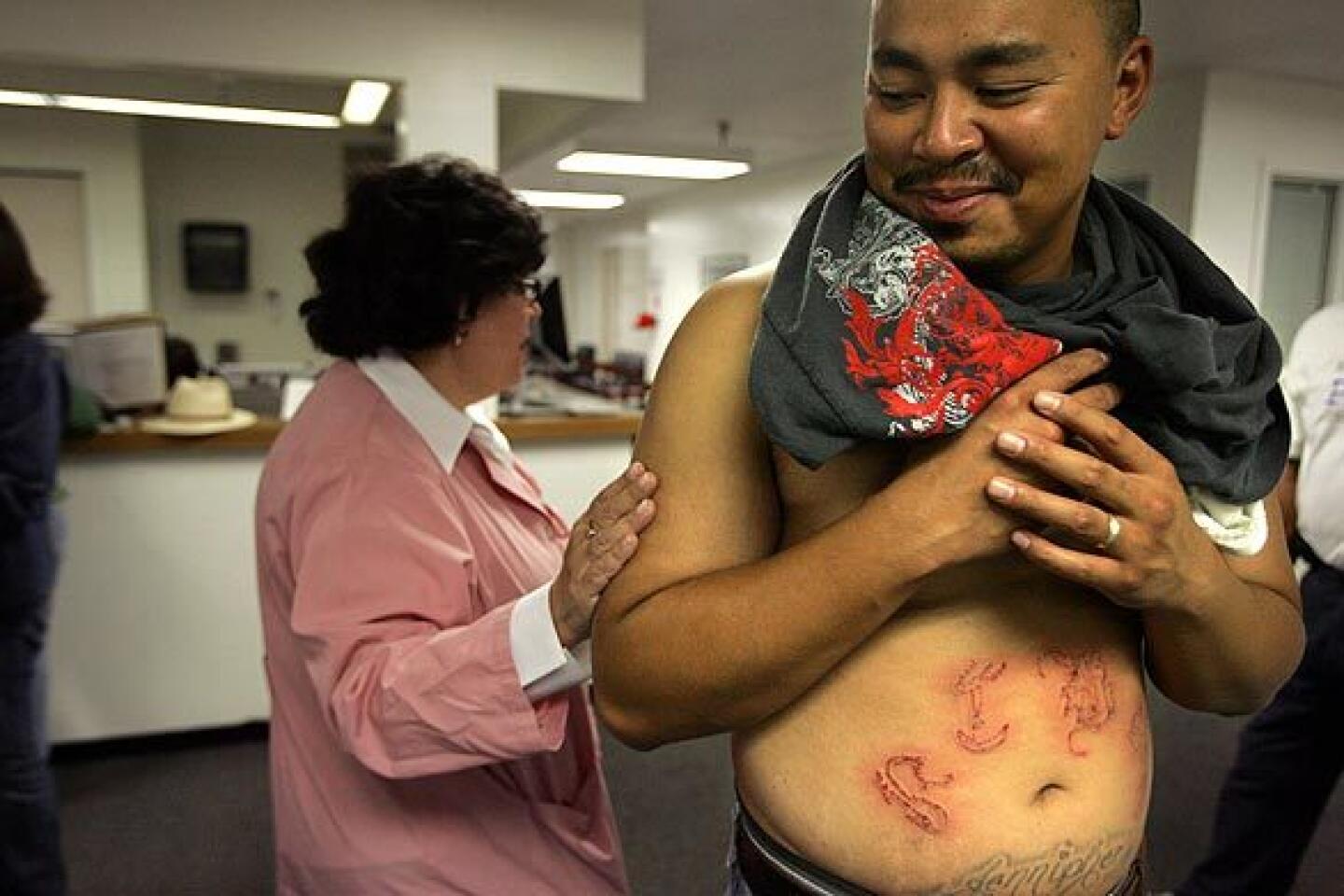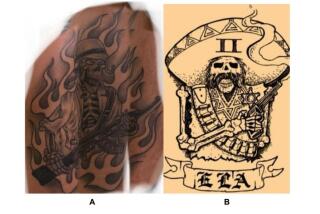Wiping away stains of a troubled past
- Share via
One was a nice Jewish girl, born on Groundhog Day 1955.
Her parents had survived the Holocaust -- her mother living in the woods with resistance fighters, her father enduring Auschwitz, then Buchenwald.
After the war, they staved off the nightmares the way so many others did -- by building an American life that was neat, clean, unblemished. Bryna Kane, the oldest of their three children, woke up many mornings to the smell of Lysol.
“It was a sheltered childhood,” she said. “I couldn’t cross the street by myself.”
She was expected to excel, and she did, studying biochemistry and then becoming -- like her grandmother in Poland, her namesake -- a physician.
The other was born into trouble.
When Maricela Pedroza was 2, a coyote brought her across the border with a fake birth certificate. Her father landed in prison, her mother in a cloud of drugs. By 13, she was smoking and drinking with the Long Beach street gang Barrio Pobre. The gang members called her “Danger.” Before her 16th birthday, she was pregnant.
Today, Kane, 53, lives in an affluent and leafy enclave of Long Beach and wears a Rolex. Pedroza turned 23 on Thursday; she lives in an apartment building with graffiti etched into the elevator doors, and her car got stolen last week. “An unlikely pair,” Kane said with a smile.
One thing brought them together one recent morning: a tattoo on Pedroza’s wrist, three small dots in the shape of a triangle, shorthand on the street for “My Crazy Life” -- a life they wanted to put behind her.
They both knew something about tattoos.
Kane’s parents met after the war at a dance in Los Angeles for refugees. They settled into a tight-knit community of Jews -- many of them Holocaust survivors and new immigrants known affectionately as “Greeners” -- first in Hollywood and then in Long Beach, where her father became a cantor and a rabbi at Temple Beth Shalom.
Many of her parents’ friends had numbers tattooed on their arms, tattoos that had been applied forcibly by the Nazis. Some wore long-sleeved shirts. Others kept them exposed, a reminder of fortitude, of defiance.
“I was always fascinated by them,” Kane said.
She saw more tattoos as an adult, with the rise of the gang culture.
“I don’t want anyone to think it’s the same thing,” she said. “But there is a similarity. You have a mark, and it’s permanent, a reminder of the past.”
After medical school, Kane completed a residency in dermatology and, in 1998, opened the Laser Skin Care Center and Dermatology Associates in Long Beach. Her partner, Edward Glassberg, had done early research on applying laser technology in dermatology. Together, they bought a laser designed to remove tattoos.
“It was just sitting there on the weekends,” she said.
They launched a program called Erase the Past; so far, they’ve helped remove the tattoos of 4,000 at-risk young people, 80% of them former gang members. The service is free, though patients are required to do community service in exchange.
“A lot of these kids are just like me. Their parents are immigrants,” Kane said. “It’s just that they weren’t given the direction, the foundation of love that I was.”
For Pedroza, the street life felt so important back then, and it seems so silly now.
They would gather in Drake Park, hidden away in a rough neighborhood north of downtown Long Beach. Her friends stole cars and carried guns in their socks. They taught little boys to make gang symbols with their hands. She was not a full-fledged gang member, she said; few girls were. But she was comfortable with them.
One day at the park, a friend gave her three tattoos, using a sewing needle and the ink of a ballpoint pen. On her shoulder, she got the name of a friend in the gang. On her chest she added “Daddy’s Little Girl,” though she didn’t know him well enough to know why he was in prison for much of her life. On her wrist she got the three dots. Even now, she struggles to explain what it meant.
“Just that you’ve been through stuff,” she said quietly.
She gave birth to Andy when she was 16.
“I grew up. In one day,” she said. “I was all by myself.”
She earned her high school diploma and found an apartment; Andy has lived in six apartments in his six years. She reconciled with her mother, who is now sober. She began studying at Los Angeles Harbor College to become a crime scene investigator, taking a full course load despite working two jobs. There are other young mothers at the college; none seem to share her story.
“I talk to them,” she said. “The things they’re going through, it’s more like: ‘The guy doesn’t love me.’ I did things those girls would be embarrassed to do. I went to churches and asked for food. I did things just to survive.”
The tattoos began to gnaw at her. Once, they were symbols of pride and community; she still says it took “a lot of guts” to get them. But, increasingly, she began to see them as stains, as the traces of a girl she didn’t know anymore.
Last year, she signed up for Kane’s program.
Early on a recent Saturday, she and about 15 other clients met at Long Beach Memorial Medical Center. They held hands and stood in a circle. “This is a country of second chances -- sometimes third or fourth chances,” the doctor told them.
Pedroza was by no means the worst case there. One teenager had joined an anarchist group in the desert; tattoos covered much of her face. One former gang member had undergone 39 tattoo-removal treatments -- this would be Pedroza’s eighth -- and he wasn’t done yet.
Soon, it was Pedroza’s turn. Kane took a look at her tattoos. “We’re making headway,” she said, patting Pedroza on the leg. Pedroza hopped up on a gurney. A technician cranked up the laser up to five joules; Kane put on a face mask and went to work; the laser bit into Pedroza’s tattoos, and she curled her toes.
After a few minutes, she was done. She will need a few more treatments for her larger tattoos, but before long, the three dots were gone. All that remained were small scabs, and those would soon disappear too.
It was the end, it seemed, of her crazy life.
She has moved about a mile from Drake Park and is no longer in the gang’s turf. Still, she is close enough that she sees some of her acquaintances from the old days; every time, she looks away and tries to make sure they don’t see her.
Her days, meanwhile, are a dizzying blur. They start at dawn, when she gets Andy ready for school; he is an honor-roll student at Lafayette Elementary School. The days often do not end until 2 a.m., after her shift as a restaurant hostess.
“I’m glad I went through what I went through,” she said. “I used to think everything was easy. It’s not.”
It is nice now to worry merely about the normal stuff -- whether Andy’s done his homework, whether he sprained his arm when he fell off the monkey bars earlier this week.
“I think we’re going to go to the doctor tomorrow,” she said the other day when she picked Andy up from after-school care, kneeling to look at his swollen right arm.
“What are they going to do to me?” he asked.
“You’ll be fine,” she told him.
They climbed into a rental car her insurance had provided until she could replace her stolen car. The rental was a 2009 model; Andy ran a finger along the pristine upholstery and announced he wanted to keep it. Pedroza backed out of the driveway.
“Were you good today?”
“I was bad for a little while,” Andy said. “Then I was great.”
Pedroza giggled.
“What a way to finish a day,” she said, and she drove toward home.
Gold is a Times staff writer.
latimes.com /outthere Seeing the ink disappear Additional photographs of Dr. Bryna Kane, Maricela Pedroza and the Erase the Past tattoo-removal program, as well as a video documentary and a discussion board accompanying this article, can be found online. Readers can also find the archives of Out There, Scott Gold’s series of weekly postcards from across Southern California. In weeks to come, look for new installments from the Mid-City district of Los Angeles and Koreatown.
More to Read
Sign up for Essential California
The most important California stories and recommendations in your inbox every morning.
You may occasionally receive promotional content from the Los Angeles Times.
